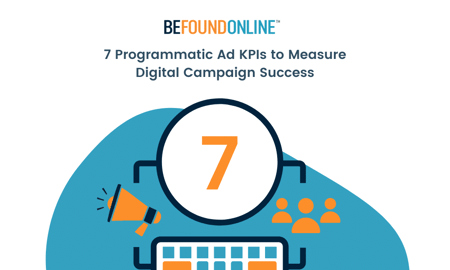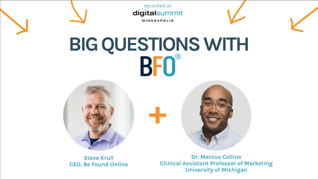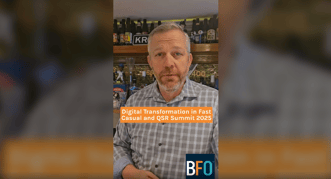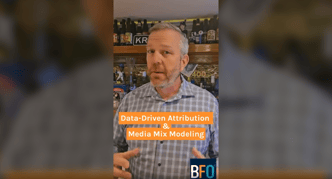7 Programmatic Ad KPIs to Measure Digital Campaign Success - BFO
May 18, 2022
5 Minute Read

In today’s highly competitive digital marketing landscape, programmatic advertising has become a key channel for brands to closely observe their campaign performance. This strategy involves the use of automated technology to purchase digital advertising for cross-channel campaigns that target your segmented audiences. Unlike the traditional paid search advertising, which involves negotiations and manual insertion orders, programmatic advertising utilizes algorithmic software to purchase and sell an online display space through dynamic display, video, and native advertising.
In order to measure the cost and effectiveness of your programmatic campaigns (or any digital marketing campaign really), it is imperative to implement key performance indicators (KPIs). In this post, we cover 7 programmatic ad KPIs to help you measure the success of your digital campaigns.
7 Programmatic Ad KPIs to Measure Success
Before we hop into our overview of the 7 programmatic ad KPIs you should be tracking, it is important that we make one thing clear: the KPIs you measure should align with your business objectives. Before determining your KPIs, you need to determine what you want your campaign to accomplish and what audience you are targeting. Your goals inform you on which KPIs you should track. For instance, if you aim at increasing your brand awareness, you might consider impressions as an impactful key performance indicator.
Clear objectives enable you to easily determine which metrics to track and the campaign targeting tactic to help you achieve them. With that being said, below you will find the top KPIs we recommend you measure to determine the success of your programmatic campaigns.
1. Clicks
Clicks come in handy when seeking to understand how well your target audience responds to your ads. This metric is quite straightforward since you are tracking how many clicks your ads get. The higher the number, the more interest your product has, which is the first step in converting viewers to customers.
If your campaign aims at getting clicks, you can use a mobile app or video campaign to get users to click and learn more. It is inaccurate to assume that all clicks indicate a new customer since not all will lead to conversions. However, combining clicks and impressions can help you calculate an actionable percentage and make informed campaign budget decisions to optimize your ad ROI.
2. Impressions
Impressions are a vital baseline metric worth tracking. They help you calculate your brand awareness by indicating the number of times that your ad was displayed on a third-party site. It is worth noting that impressions do not indicate who has seen your ad, so they do not offer a quantitative measure of the people you reach. However, it is valuable in calculating other vital metrics that result in better campaign performance.
There are two types of ad impressions. One is served impression, which refers to when the transmitted served content counts as an impression. The other one is the viewable impression, where additional data is used to determine whether the user saw the served content or not. Viewable impressions are more accurate than served impressions since they offer reliable performance data to data analysts for campaign improvement.
3. Conversions
Conversions refer to when a user completes a particular action on the landing page. This metric is unique since it allows you to customize what you are looking for. In other words, you can calculate the conversion rate based on your specified campaign goals, such as actual product sales or free trial sign-ups. Your conversion rate will help you understand the overall engagement and determine which ads drive the targeted audience to take action.
4. Cost-Per-Conversion
Programmatic ads require money to run, so you must track financial metrics to measure the campaign success. One of the critical financial considerations is cost-per-conversion. To track this metric, you must determine which action you want your target audience to complete on the landing page.
From there, you can compare the conversion numbers with the total campaign cost. Calculating cost-per-conversion is hassle-free. You only need to divide the total campaign cost by the total conversions. If the rate is below where you aspire to be, consider the conversion you are looking for. For instance, if you want a first time visitor to purchase your product immediately, that might be too much to ask. Try tracking something smaller like free sign-ups.
5. Revenue
Revenue is another financial metric that is worth tracking. As a brand owner, you need to understand what your programmatic ads generate, from gross to net revenue. Coupling this with your cost metrics will help calculate your profits and streamline your margins over time.
It is essential to know the amount you generate per click, per page and the overall return on investment (ROI) from your marketing campaign. That way, you can measure the success of your campaign and identify areas for improvement.
6. ROAS
Also known as Return on Ad Spend, ROAS refers to the revenue earned for every dollar spent on marketing or advertising. This KPI differs from ROI because it specifies the return from a single ad campaign instead of the overall investment. A good ROAS indicates that your marketing budget is efficiently spent. To calculate your ROAS, you need to divide the total ad-generated revenue by the amount of money you spent on the ad.
For instance, if you earn $200 from an ad that costs you $100, you will have 200% ROAS. If the percentage is below 100, it shows your ad campaign is at a loss. In such a case, you need to develop ways to improve your ad and methods of lowering the cost. Note that ROAS shows the success or failure of your campaign, but it does not include context, so you must dig deeper.
7. Reach
Reach is a vital metric in measuring brand awareness. It helps you understand how many people your programmatic campaign has reached. As opposed to impressions, which are calculated per potential view, reach is calculated per person.
Tracking your reach will help you control the parameters of your upcoming ad campaigns. You can couple this metric with others like clickthrough rate (CTR) and frequency to understand your ad success better.
Programmatic Ad KPIs Highly Depend on Your Campaign
Programmatic ad campaigns are essential for creating brand awareness and increasing your ROI. While all the listed KPIs are essential in measuring the success of your campaigns, your business goals will determine which ones to give higher consideration to.
If you need help creating a programmatic ad strategy or better understanding these KPIs, contact Be Found Online. We are ready to help you get ahead of the evolving digital advertising landscape!

The BFO Team
Here at BFO, we're always striving to bring you the latest and greatest in digital marketing insights and education. We're not ones to brag, but we've been lucky enough to be featured in all sorts of fancy publications and media outlets, strutting our stuff and showing off our industry expertise.
CATEGORIES
SUBSCRIBE TO OUR BLOG
Stay up to date with the latest industry best practices in digital marketing!























.png?width=339&height=179&name=Webinar%20Banner%20(1).png)



.png?width=339&height=179&name=July%20Webinar%20(Newsletter).png)

.png?width=339&height=179&name=Webinar%20Banner-April-02%20(1).png)
%20(4).png?width=339&height=179&name=Webinar%20Banner-May-02%20(1)%20(4).png)




.png?width=339&height=179&name=March%202023%20Webinar%20Ad%20(autoresponder).png)






























































